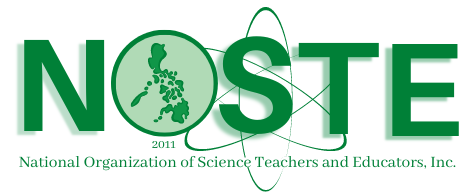Disaster Preparedness and Resilience of Peer Helpers in a State University
Jeanette J. SIMPAS
West Visayas State University, La Paz, Iloilo City, Philippines
Corresponding author’s email: simpasjeanette@gmail.com
Abstract
This mixed-method research ascertained the disaster preparedness and level of resiliency among peer helpers in West Visayas State University main and external campuses, for Academic Year 2018-2019. Seventy-six (n=76) participants were selected through stratified sampling. Eighteen (n=18) peer helpers were selected through convenience sampling who served as participants for the focus group discussions (FGD). A validated researcher-made assessment on disaster preparedness and resiliency were used. Descriptive statistics (frequency count, percentage, mean and standard deviation) and inferential statistics (Pearson’s r, .05 alpha) were utilized. Results show that peer helpers had moderate levels of disaster preparedness and resiliency. Female peer helpers are found to be more prepared than males. Furthermore, there is a significant relationship in peer helpers’ disaster preparedness and resiliency. This means that the higher the disaster preparedness of peer helpers the more resilient they become. However, the results of the FGD reveal that participants realize their inadequacy in terms of disaster preparedness and coping skills. There is an expressed need for skills training on these areas specifically, in relation to providing psychological support to disaster survivors as part of their role as peer helpers. As students are honed to be prepared in times of disaster, they must also be trained to learn the skills to be resilient.
Keywords: disaster preparedness, resiliency, mixed method, Iloilo, Central Philippines
References
- American Psychological Association (2015). Resilience guide for parents and teachers. Retrieved November, 2018, from https://www.apa.org/helpcenter/resilience
- American Psychological Association (2018). The road to resilience. NE, Washington, DC. Retrieved October, 2018, from www.apa.org/helpcenter/road-resilience.aspx
- Bandura, A. (1999). Social cognitive theory: An agentic perspective. Asian Journal of Social Psychology, 2, 21-41.
- Bollettino,V., Alcayna, T. Enriquez, K., Vinck, P. (2018). Perceptions of disaster, resilience and preparedness in the Philippines. Program on Resilient Communities, Harvard Humanitarian Initiative.
- Bories, J., et.al. (2018). Placing Pacific women at the forefront of disaster planning and response. United Nations and Women, New York, USA. Retrieved January, 2019, from http://www.unwomen.org/en/news/stories/2017/1/feature-pacific-women-disasterplanning-and-response
- Bowen, P., Rose, R., & Pilkington, R. (2017). Mixed methods theory and practice: Sequential explanatory approach: International journal of quantitative and qualitative research methods, 5(2), 10-27.
- Bruneau et al. (2003) in National Academic Press (2006). Facing Hazards and Disasters: Understanding Human Dimensions. The National Academies of Sciences and Engineering Medicine. 500 Fifth St., NW
- Conde, B. (2004) in Hechanova, M.R., et al. (2015). The Development and Initial Evaluation of Katatagan: A Resilience Intervention for Filipino Disaster Survivors. Philippine Journal of Psychology, 2015, 48(2), 105-131. Psychological Association of the Philippines
- Corssman, A. (2018). Understanding stratified samples and how to make them. Retrieved November, 2018, from https://www.thoughtco.com/ stratified-sampling-3026731
- Cox, R., Scannell, Heykoop, Tobin-Gurley, & Peek (2017). Understanding youth disaster recovery: The vital role of people, places, and activities. International Journal of Disaster Risk Reduction 22(249-256).
- ECHO (2008) in Mainstreaming Disaster Risk Reduction in Subnational Development and Land Use/Physical Planning in the Philippines NEDA, UNDP, ECHO (2008). Integrating Gender into Community Based Disaster Risk Management: Training Manual. CBDRM Training and Learning Circle-Philippines Center for Disaster Preparedness. Retrieved December 2018, from https://tinyurl.com/y8srkq97
- Ejeta, L., Ardalan, A., and Paton, D. (2015) Application of behavioral theories to disaster and emergency health preparedness: A systematic review (1st ed). PLOS Current Disasters.doi:10.1371/currents.dis.31a8995ced321301466db400f1357829.
- Fletcher, D., & Sarkar, M. (2013). Psychological resilience: A review and critique of definitions, concepts, and theory. European Psychologist, 18(1),12–23. https://doi.org/10.1027/10169040/a000124
- Flores (2013) in Hechanova, M.R., et al. (2015). The Development and Initial Evaluation of Katatagan: A Resilience Intervention for Filipino Disaster Survivors. Philippine Journal of Psychology, 2015, 48(2), 105-131. Psychological Association of the Philippines
- Laverinto (2010) in Landoy, B.V., et al. (2015). The Application and Adaptation of Psychological First Aid: The Filipino Psychologists’ Experience After Typhoon Haiyan. Philippine Journal of Psychology, 2015, 48(2), 81-104. Psychological Association of the Philippines National Research Council. 2012. Disaster Resilience: A National Imperative. Washington, DC: The National Academies Press. doi: 10.17226/13457
- Loyola, M.L., Jalandoni, N., & Robles, B. (2013). The profile, personal attributes and protective factors of resilient at-risk youth in a state university. Research Journal, 2(20-30). Iloilo City: West Visayas State University: University Research and Development Center
- NEDA, UNDP, ECHO (2008). Mainstreaming Disaster Risk Reduction in Subnational Development and Land Use/Physical Planning in the Philippines Integrating Gender into Community Based Disaster Risk Management: Training Manual. CBDRM Training and Learning Circle-Philippines Center for Disaster Preparedness. Retrieved December 2018, from https://tinyurl.com/y8srkq97
- National Disaster Risk Reduction Management Council (2014) in Tan, A.J., et al. (2015). Vicarious Trauma and Natural Disasters: A Transcendental Phenomenological Analysis of the Experiences of Families of Typhoon Haiyan Survivors. Philippine Journal of Psychology, 2015, 48(2), 51-80. Psychological Association of the Philippines
- Nyumba, T., Wilson, K., Derrick, C., and Mukherjee, N. (2018). The use of focus group discussion methodology: Insights from two decades of application in conservation. Methods in Ecology and Evolution 9(1), 20-32.
- Sendai Framework for Disaster Risk Reduction (2015-2030). Retrieved November, 2018, from https://www.preventionweb.net/files/43291_sendaiframeworkfordrren.pdf
- United Nations Office for Disaster Risk Reduction (2015). Making development sustainable: The future of disaster risk management. Global assessment report on disaster risk reduction. Geneva, Switzerland: (UNISDR).
- Ureta, R. (2015). Curriculum integration and implementation of disaster preparedness among secondary schools: Bases for instructional materials development (Doctoral Dissertation, West Visayas State University, 2015). Iloilo City
- Versoza (2011) in Landoy, B.V., et al. (2015). The Application and Adaptation of Psychological First Aid: The Filipino Psychologists’ Experience After Typhoon Haiyan. Philippine Journal of Psychology, 2015, 48(2), 81-104. Psychological Association of the Philippines
- Vladimir, C., Roder, G., Vocal, A., Tarroli, P., & Dragićević, S. (2018). The role of gender in preparedness and response behaviors towards flood risk in Serbia. Retrieved December, 2018, from https://www.mdpi.com/1660-4601/15/12/2761/htm
- Vygotsky, L. S. (1978). Mind in society: The development of higher psychological Processes. Cambridge, MA: Harvard University Press.
